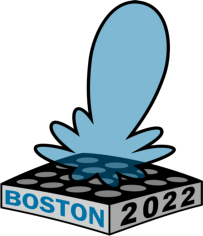2022 IEEE International Symposium
on Phased Array Systems and Technology
Revolutionary Developments in Phased Arrays
11–14 October 2022

Tutorial: Digital Arrays
Part 1:
Digitization of signals in phased arrays moved from the backend to the frontend in the last few decades, and this trend has been supported by a number of prototypes/demonstrators to explore the associated engineering science. The first part of this tutorial will summarize the work that the presenters have done on a number of these demonstrators over the last 15 years, briefly summarizing the calibration concepts and lessons learned with these testbeds.
Part 2:
The calibration and pattern measurement of large outdoor phased arrays typically requires large infrastructure for direct measurements of radiated fields, or such measurements are made indirectly using internal (nearfield measurement or mutual coupling-based) mechanisms. For many applications, especially that of large, next-generation phased array weather radars, direct far-field measurements are either preferred or demanded by the application’s scientific goals. This tutorial introduces and explores the use of calibration probes mounted on UAVs as a means to provide such a far-field measurement mechanism for these phased array systems. Dual-polarization calibration, being critical for weather radar systems, will be discussed, as well as the trade spaces involved in pattern measurements using such a platform.

Caleb Fulton, (Advanced Radar Research Center at the University of Oklahoma)
Caleb Fulton received the bachelor and doctorate degrees in Electrical and Computer Engineering from Purdue University
in 2006 and 2011, respectively. He is currently an Associate Professor of Electrical Engineering with the Advanced Radar
Research Center at the University of Oklahoma. His current research interests include antenna design, digital phased array
calibration and compensation for transceiver errors, calibration for high-quality polarimetric radar measurements,
integration of low-complexity transceivers and high-power GaN devices, and advanced digital beamforming design
considerations. He is involved in a number of digital phased array research and development efforts for a variety of
applications. He was the recipient of the Purdue University Eaton Award for Design Excellence in 2009 for his work on the
Army Digital Array Radar (DAR) Project, the Meritorious Paper Award for a summary of these efforts at the 2010
Government Microcircuit Applications and Critical Technologies Conference, and the 2015 DARPA Young Faculty Award
for his ongoing digital phased array research.”

Dr. Jorge L. Salazar-Cerreno, (Advanced Radar Research Center at the University of Oklahoma)
Jorge L. Salazar-Cerreno received a B.S. In ECE from the University Antenor Orrego, Trujillo, Peru, M.S. degree in ECE from the University of Puerto Rico, Mayaguez (UPRM). In 2011, he received his Ph.D. degree in ECE from the University of Massachusetts, Amherst. His Ph.D. research focused on development of low-cost dual-polarized active phased array antennas (APAA) for the Engineering Research Center for Collaborative Adaptive Sensing of the Atmosphere (CASA). After graduation, Dr. Salazar-Cerreno was awarded a prestigious National Center for Atmospheric Research (NCAR) Advanced Study Program (ASP) postdoctoral fellowship. At NCAR, he worked at the Earth Observing Laboratory (EOL) division developing airborne technology for two-dimensional, electronically scanned, dual-pol phased array radars for atmospheric research. This is a critical tool for studying weather and related hazards, especially for retrieving dynamic and microphysical characteristics of clouds and precipitation over rugged terrain or the open ocean, where other radar systems can have major limitations. In July 2014, he joined the Advanced Radar Research Center (ARRC) at The University of Oklahoma as a research scientist, and became an assistant professor at the School of Electrical and Computer Engineering in August 2015. His research interests include high-performance, broadband antennas for dual-polarized phased array radar applications; array antenna architecture for reconfigurable radar systems; APAA; Tx/Rx modules; radome EM modeling; RF and hardware development for characterizing and calibrating APAA and millimeter-wave antennas for automobile and communication systems. His research team (PAARD) is collaborating with the National Science Foundation (NSF), U.S. National Oceanic and Atmospheric Administration (NOAA), NASA-JPL, the U.S. Navy Research Lab (NRL), the U.S. Army Research Lab (ARL), the U.S. Airforce Research Lab (AFRL), and NCAR. In 2019, Dr. Salazar was awarded the prestigious William H. Barkow Presidential Professorship from The University of Oklahoma. Presidential Professors inspire and mentor their undergraduate and graduate students in research and creative scholarly activity within their discipline, and exemplify professional scholarship through their endeavors in teaching, research, and public outreach. In 2022 Dr. Salazar was honored with the award for excellence in research and outstanding faculty of the year. Dr. Salazar is a senior member of the IEEE and currently serves as a reviewer for IEEE Transactions on Antennas and Propagation (TAP), IET Microwaves, Antennas and Propagation (IET), The Journal of Atmospheric and Oceanic Technology (JTECH), IEEE Transactions on Geoscience and Remote Sensing (TGARS), The Radio Science Journal, and John Wiley and Sons (https://www.ou-arrc-paard.com/).